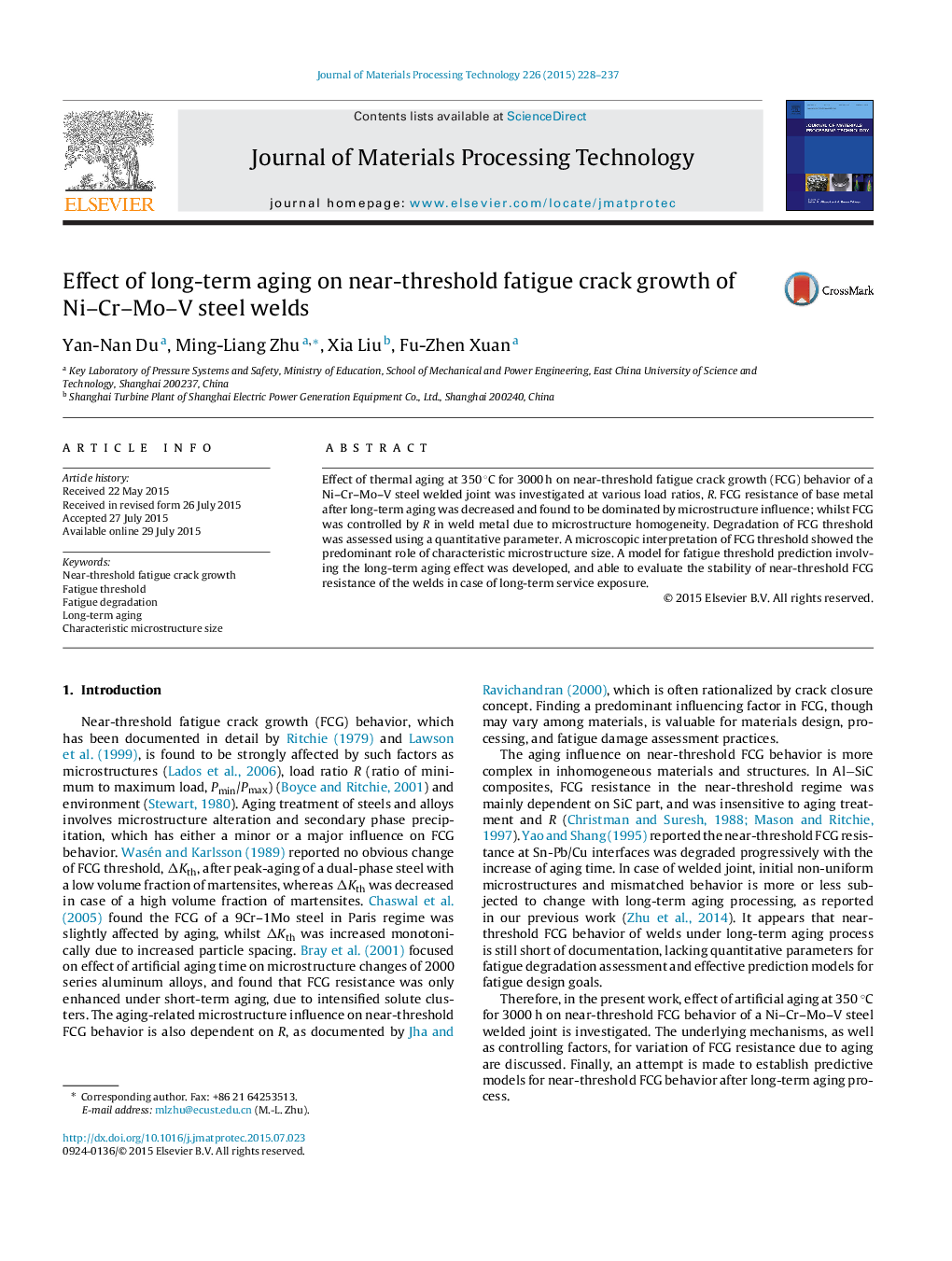| Article ID | Journal | Published Year | Pages | File Type |
|---|---|---|---|---|
| 794666 | Journal of Materials Processing Technology | 2015 | 10 Pages |
Effect of thermal aging at 350 °C for 3000 h on near-threshold fatigue crack growth (FCG) behavior of a Ni–Cr–Mo–V steel welded joint was investigated at various load ratios, R. FCG resistance of base metal after long-term aging was decreased and found to be dominated by microstructure influence; whilst FCG was controlled by R in weld metal due to microstructure homogeneity. Degradation of FCG threshold was assessed using a quantitative parameter. A microscopic interpretation of FCG threshold showed the predominant role of characteristic microstructure size. A model for fatigue threshold prediction involving the long-term aging effect was developed, and able to evaluate the stability of near-threshold FCG resistance of the welds in case of long-term service exposure.
